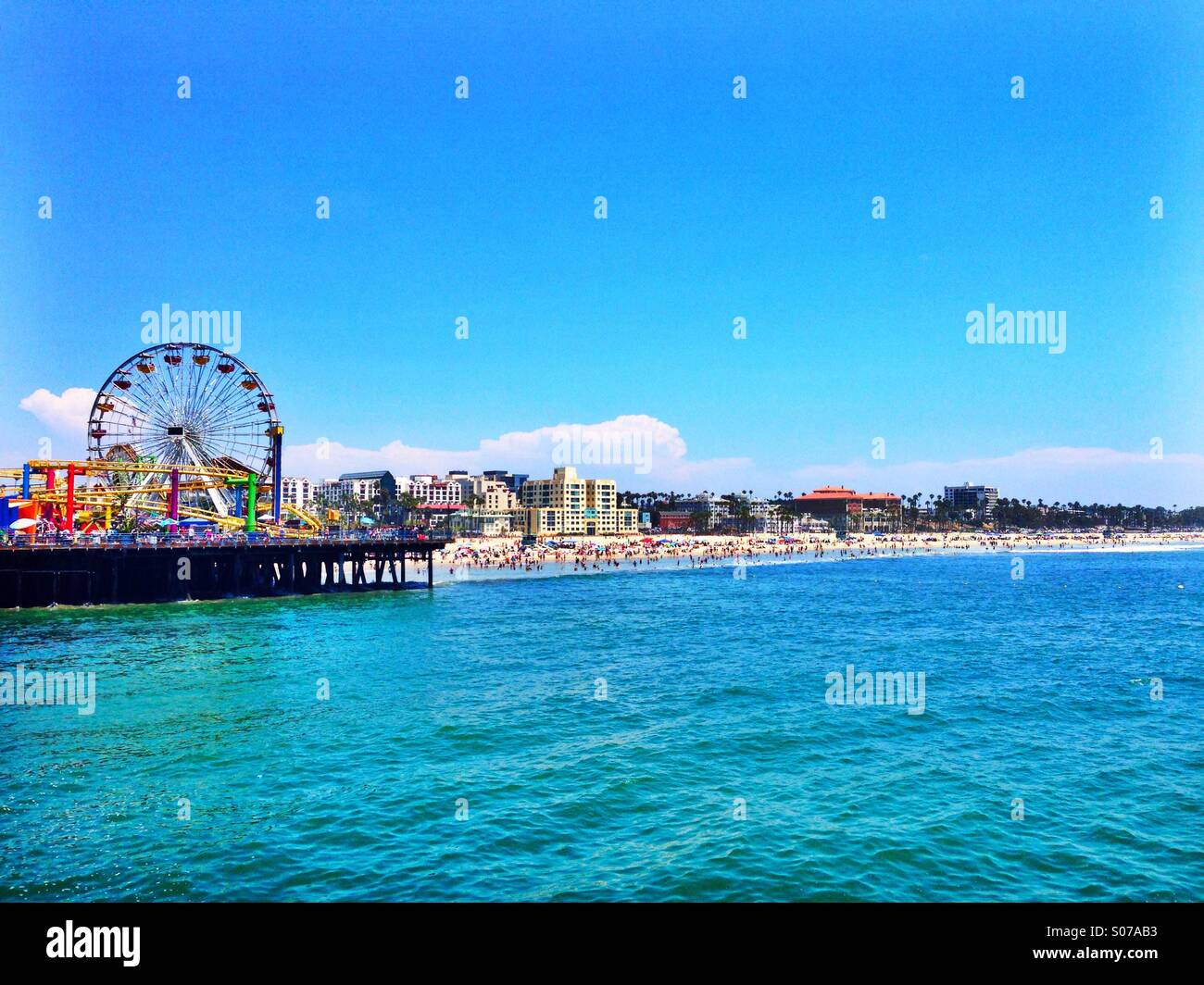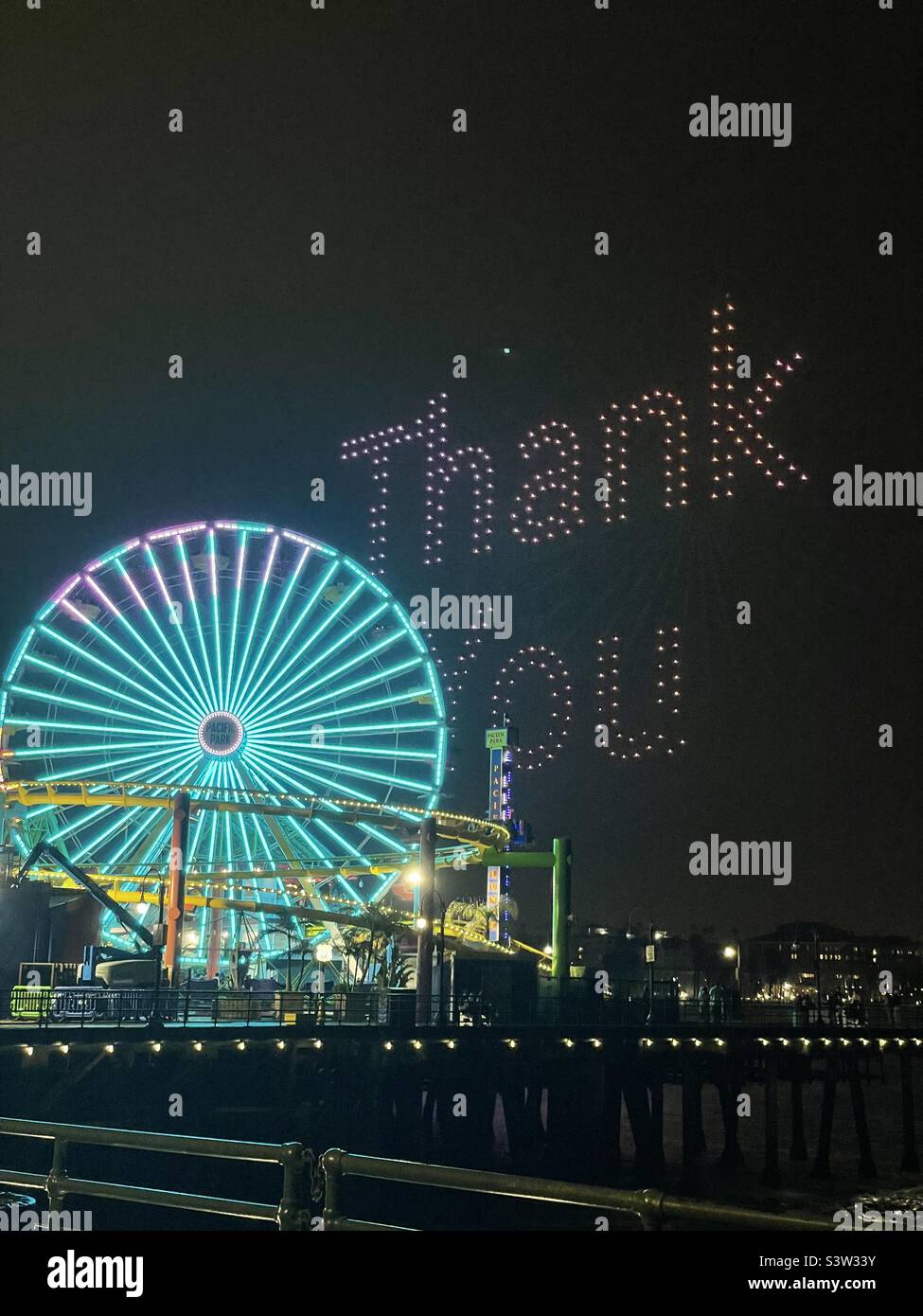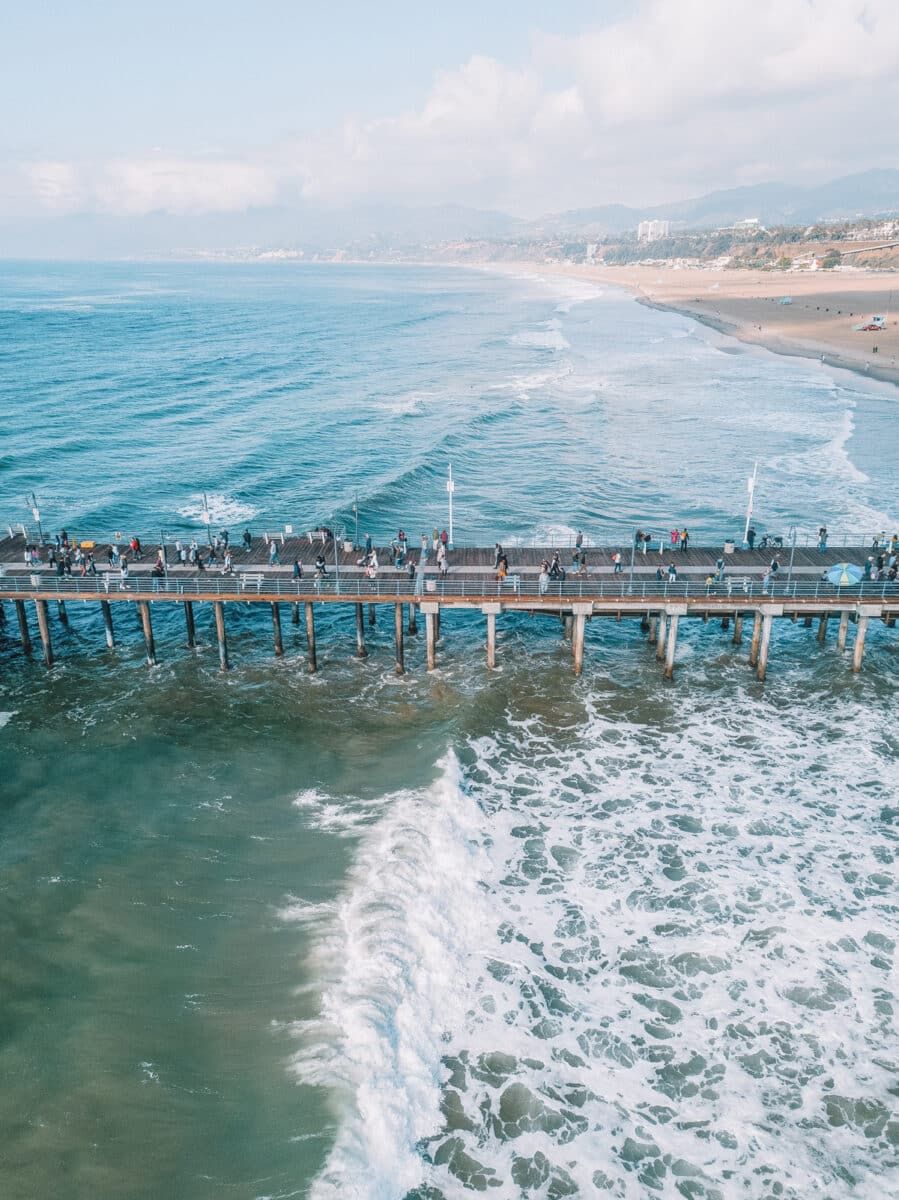Santa Monica Pier Burned: The Devastating Fire That Shook LA
On a fateful day in Southern California, the iconic Santa Monica Pier faced one of its darkest moments when a fire erupted, threatening not just its historic structure but also the cherished memories of millions. The Santa Monica Pier burned incident sent shockwaves through the community, capturing global attention and sparking urgent discussions about preservation and safety. It's not just a pier; it's a symbol of fun, freedom, and coastal living. But when disaster strikes, how do we rebuild and move forward? Let's dive into the details.
The Santa Monica Pier has always been more than just a tourist spot. For locals and visitors alike, it's a place where laughter echoes, the ocean breeze feels perfect, and the ferris wheel lights up the night sky. But when the unthinkable happened, and the pier burned, it was a reminder of how fragile even the strongest landmarks can be. This wasn't just a fire; it was a wake-up call.
Now, before we get into the nitty-gritty, let me tell you why this matters. It's not just about the physical damage or the cost of repairs. It's about the emotional connection people have with this place. It's about the stories, the memories, and the legacy that the pier represents. So, buckle up, because we're about to explore the events leading up to the fire, the aftermath, and the road to recovery.
Read also:Kaylee Hartungs Journey Through Eye Surgery A Comprehensive Guide
The History of Santa Monica Pier: A Quick Recap
Before we talk about the fire, let's take a moment to appreciate the rich history of the Santa Monica Pier. Built in 1909, it wasn't just any pier. It was designed to be a destination, a place where people could escape the hustle and bustle of city life and enjoy the beachside charm. Over the years, it evolved from a simple wooden structure to a bustling hub of entertainment, complete with roller coasters, arcades, and that iconic ferris wheel.
Key Milestones in the Pier's Journey
- 1909: The pier opens as a modest wooden structure.
- 1916: The Looff Hippodrome building is added, featuring a historic carousel.
- 1920s: The pier becomes a hotspot for fishing and amusement rides.
- 1980s: Restoration efforts breathe new life into the aging landmark.
- 2000s: The pier continues to thrive as a cultural and economic hub.
But let's be real—history is great and all, but what happens when that history is threatened? That's exactly what we're about to explore.
The Day the Santa Monica Pier Burned
It was a regular day in Southern California—sunny skies, a gentle breeze, and tourists snapping photos. But then, out of nowhere, smoke started billowing from the pier. People initially thought it was a small fire, maybe someone accidentally left a cigarette behind. But as the flames grew, the reality sunk in: the Santa Monica Pier burned, and it wasn't a drill.
How It Happened
According to initial reports, the fire likely started in the electrical systems beneath the pier. These systems, while regularly maintained, are still vulnerable to the elements. Saltwater corrosion, coupled with the constant wear and tear, can create the perfect storm for disaster. Within minutes, the fire spread rapidly, fueled by the wooden structures and dry conditions.
First responders were on the scene in no time, but the challenge was immense. Fighting a fire on a pier is no easy task. Water access is limited, and the wind can make containment nearly impossible. Despite their best efforts, significant damage was done.
The Aftermath: Assessing the Damage
When the smoke cleared, the extent of the damage became apparent. Sections of the pier were charred, rides were destroyed, and the beloved carousel faced extensive damage. It was heartbreaking to see such a vibrant place reduced to ashes. But beyond the physical destruction, there was an emotional toll as well.
Read also:Exploring The Life And Marriage Of Khamzat Chimaev
Local businesses that rely on the pier for income were hit hard. Souvenir shops, food vendors, and tour operators all felt the ripple effects. For many, the pier isn't just a place to work; it's a community. Losing it, even temporarily, was devastating.
Community Response
But here's the thing about communities—they don't give up easily. In the wake of the fire, locals and visitors alike rallied together. Fundraisers were organized, donations poured in, and volunteers stepped up to help with cleanup efforts. It was a true testament to the spirit of Santa Monica and its people.
Rebuilding Efforts: A Glimmer of Hope
Rebuilding the Santa Monica Pier isn't just about restoring a landmark; it's about preserving a piece of history. Experts from all over the country have been consulted to ensure that the reconstruction is both safe and sustainable. New materials and technologies are being considered to prevent similar incidents in the future.
Challenges Faced
Of course, rebuilding isn't without its challenges. Funding, permits, and design approvals all take time. Plus, there's the delicate balance of maintaining the pier's original charm while incorporating modern safety features. It's a lot to juggle, but the team behind the project is committed to getting it right.
Lessons Learned: Preventing Future Fires
Every disaster is an opportunity to learn, and the Santa Monica Pier fire is no exception. Experts are now looking at ways to improve fire safety on piers and other coastal landmarks. This includes upgrading electrical systems, implementing stricter maintenance protocols, and educating staff and visitors about fire prevention.
One of the key takeaways is the importance of preparedness. Having a well-rehearsed emergency response plan can make all the difference when disaster strikes. It's not just about reacting to fires; it's about preventing them in the first place.
The Economic Impact: Numbers Don't Lie
Let's talk numbers for a second. The Santa Monica Pier generates millions of dollars in revenue each year. From ticket sales to souvenir purchases, every visitor contributes to the local economy. When the pier burned, that revenue stream was temporarily cut off, impacting not just the businesses on the pier but the entire community.
According to a report by the Santa Monica Chamber of Commerce, the estimated economic impact of the fire could reach tens of millions of dollars. That's a significant blow, but it also highlights the importance of investing in infrastructure and safety measures to protect these vital assets.
Cultural Significance: Why the Pier Matters
For many, the Santa Monica Pier is more than just a tourist attraction. It's a cultural icon, a place where generations have made memories. From first dates to family vacations, the pier has been the backdrop for countless stories. Losing it, even temporarily, is a loss for everyone who has ever set foot on its wooden planks.
But here's the thing—icons like the pier have a way of bringing people together. They remind us of what's important and inspire us to work toward a better future. And that's exactly what's happening in Santa Monica right now.
Global Reaction: The World Takes Notice
News of the Santa Monica Pier fire spread quickly, capturing the attention of people around the world. Social media was flooded with messages of support, and news outlets covered the story extensively. It's a testament to the pier's global significance and the power of shared experiences.
One of the most touching moments came when fans of the pier started sharing their favorite memories online. It was a reminder that even in the face of tragedy, there's beauty in coming together and celebrating what we love.
Looking Ahead: The Future of Santa Monica Pier
As the rebuilding efforts continue, there's a sense of optimism in the air. The pier may have burned, but its spirit remains unbroken. Plans are already in motion to make it better than ever, with new attractions, improved safety measures, and a renewed focus on sustainability.
What's Next?
Over the next few years, visitors can expect to see a transformed Santa Monica Pier. The goal is to create a space that honors its past while embracing the future. It's an exciting time, filled with possibilities and promise.
Conclusion: A Symbol of Resilience
The Santa Monica Pier burned, but it didn't break. It's a symbol of resilience, a reminder that even in the face of disaster, we can come together and rebuild. The pier may look different when it reopens, but its essence will remain the same—a place where people can laugh, dream, and create memories.
So, if you're reading this, I encourage you to get involved. Whether it's through donations, volunteering, or simply spreading the word, your support can make a difference. Together, we can ensure that the Santa Monica Pier continues to shine for generations to come.
Table of Contents
- The History of Santa Monica Pier: A Quick Recap
- The Day the Santa Monica Pier Burned
- The Aftermath: Assessing the Damage
- Rebuilding Efforts: A Glimmer of Hope
- Lessons Learned: Preventing Future Fires
- The Economic Impact: Numbers Don't Lie
- Cultural Significance: Why the Pier Matters
- Global Reaction: The World Takes Notice
- Looking Ahead: The Future of Santa Monica Pier
- Conclusion: A Symbol of Resilience


